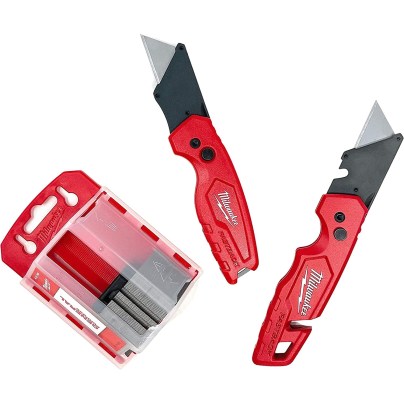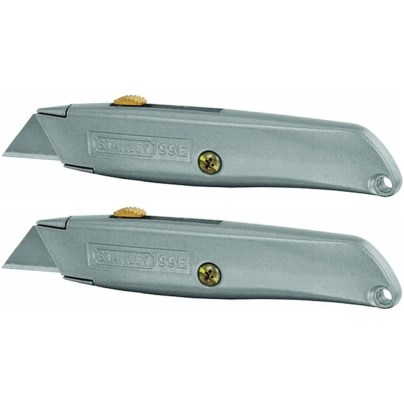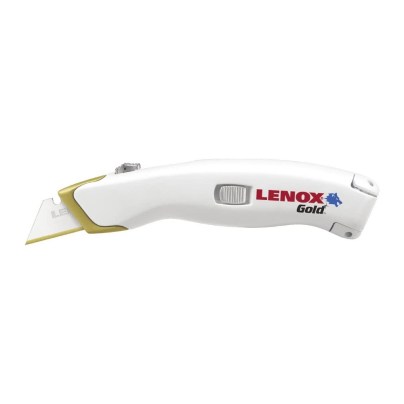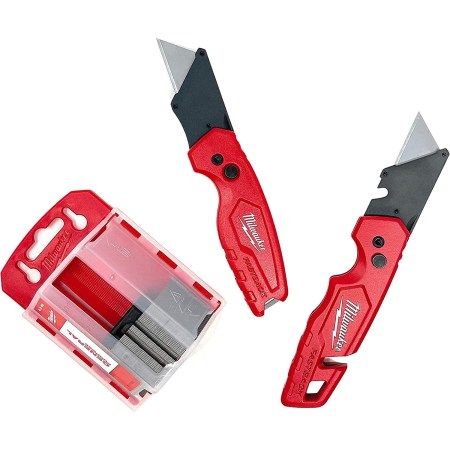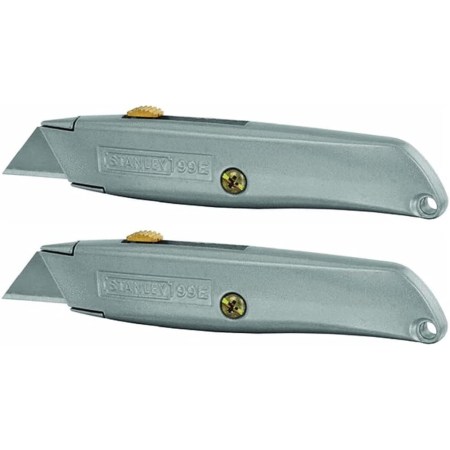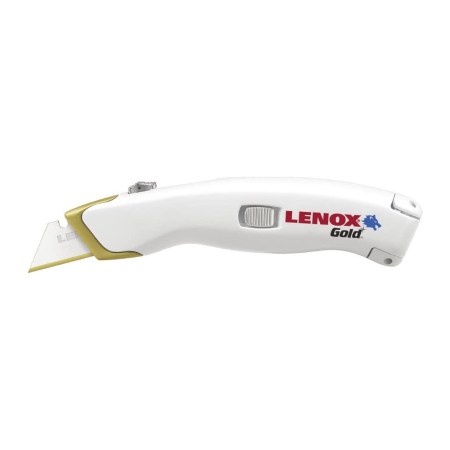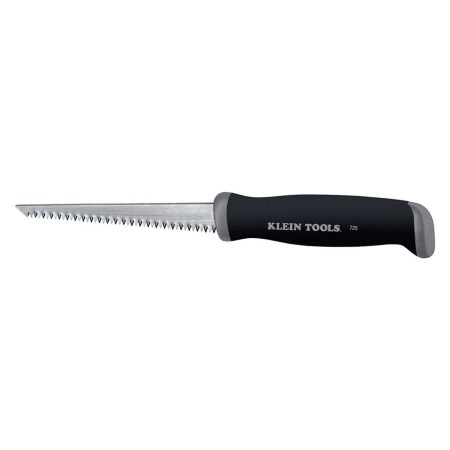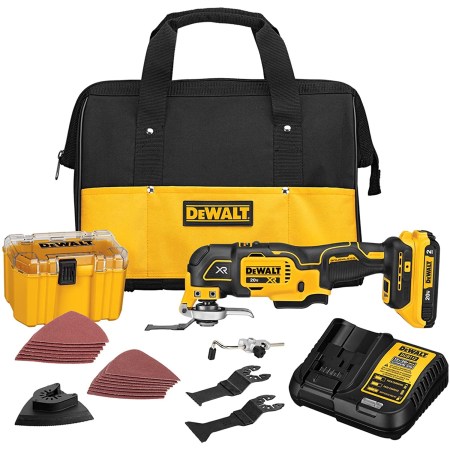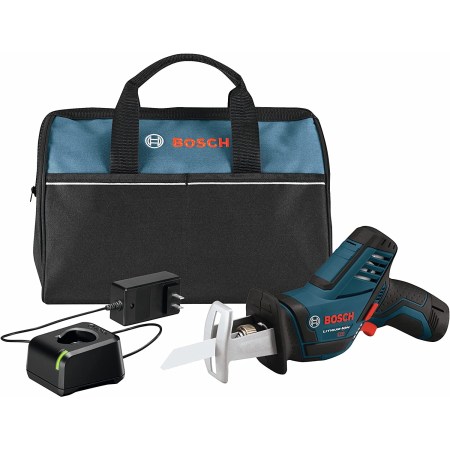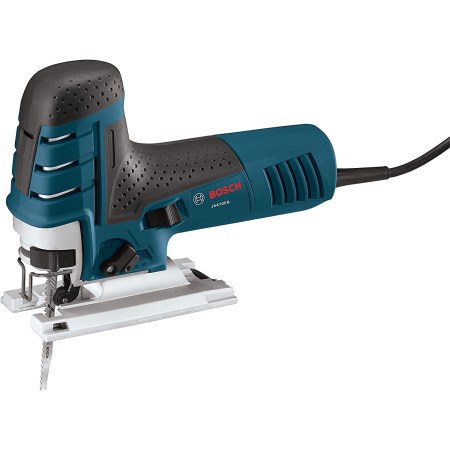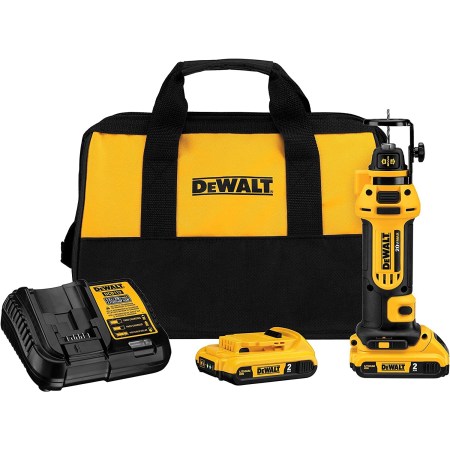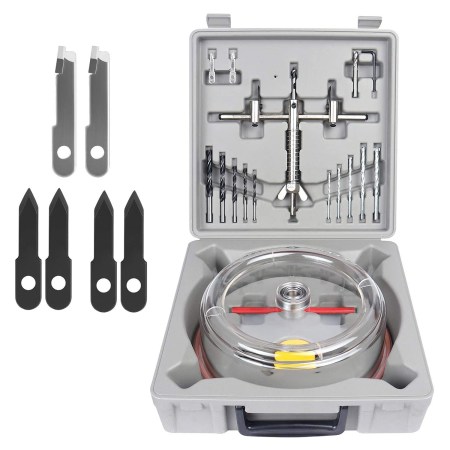We may earn revenue from the products available on this page and participate in affiliate programs. Learn More ›
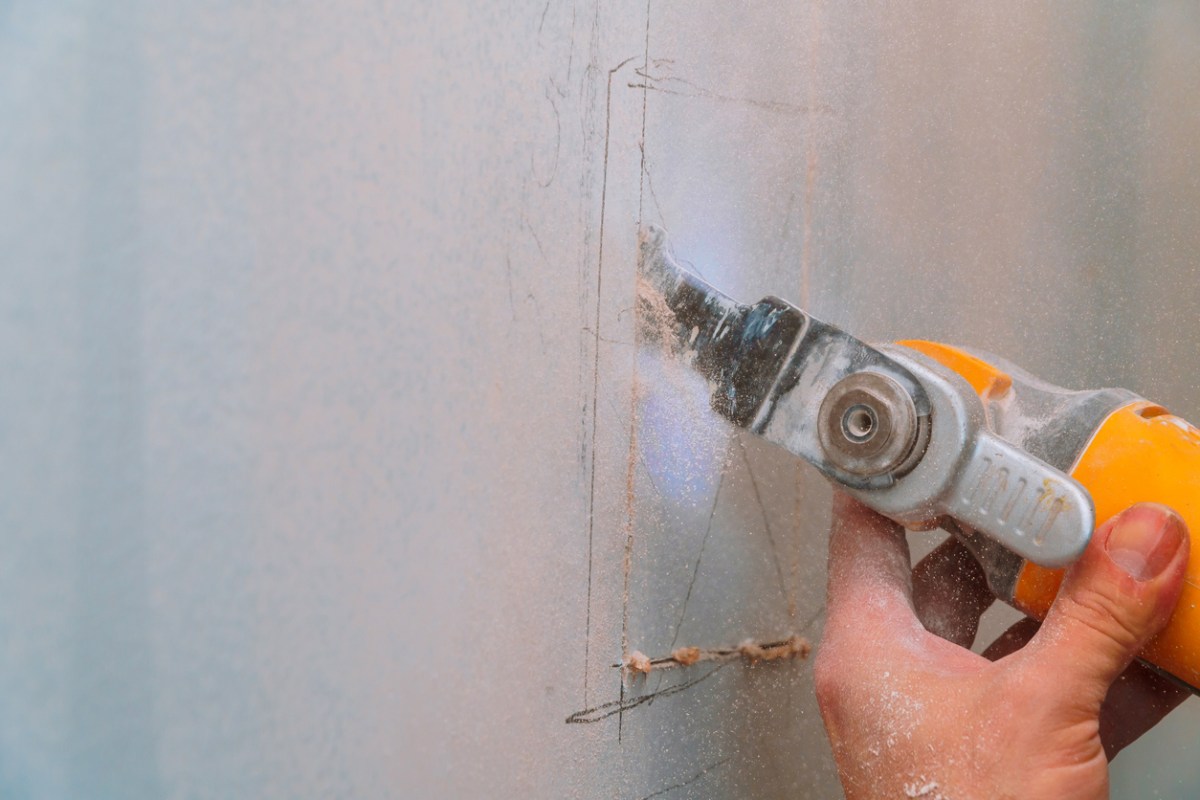
Although drywall typically goes up quickly (and is one of the most exciting stages of a project), cutting it accurately and smoothly requires the right tools. There are a lot of tools that can cut drywall but really only a few that should—and not everyone knows the difference.
This guide will cover the best tools to cut drywall as well as what to consider when choosing one over another. Best yet, there’s something for just about every situation with options that include manual and power tools. Keep reading to learn more about the points to consider and some favorite options.
- BEST OVERALL: Milwaukee Fastback Flip Utility Knife
- BEST BANG FOR THE BUCK: Stanley 10-099 Classic 99 Retractable Utility Knife
- BEST UTILITY KNIFE: Lenox Tools Utility Knife
- BEST DRYWALL SAW: Klein Tools 725 6″ Jab Saw
- BEST MULTI-TOOL: DeWalt 20V Max XR Oscillating Multi-Tool
- BEST RECIPROCATING SAW: Bosch 12V Max Pocket Reciprocating Saw
- BEST JIGSAW: Bosch JS470EB Corded Barrel-Grip Jig Saw
- BEST ROTARY TOOL: DeWalt 20V Max Drywall Cut-Out Tool Kit
- BEST HOLE SAW: Amartisan Hole Cutter, 1⅝” to 8″
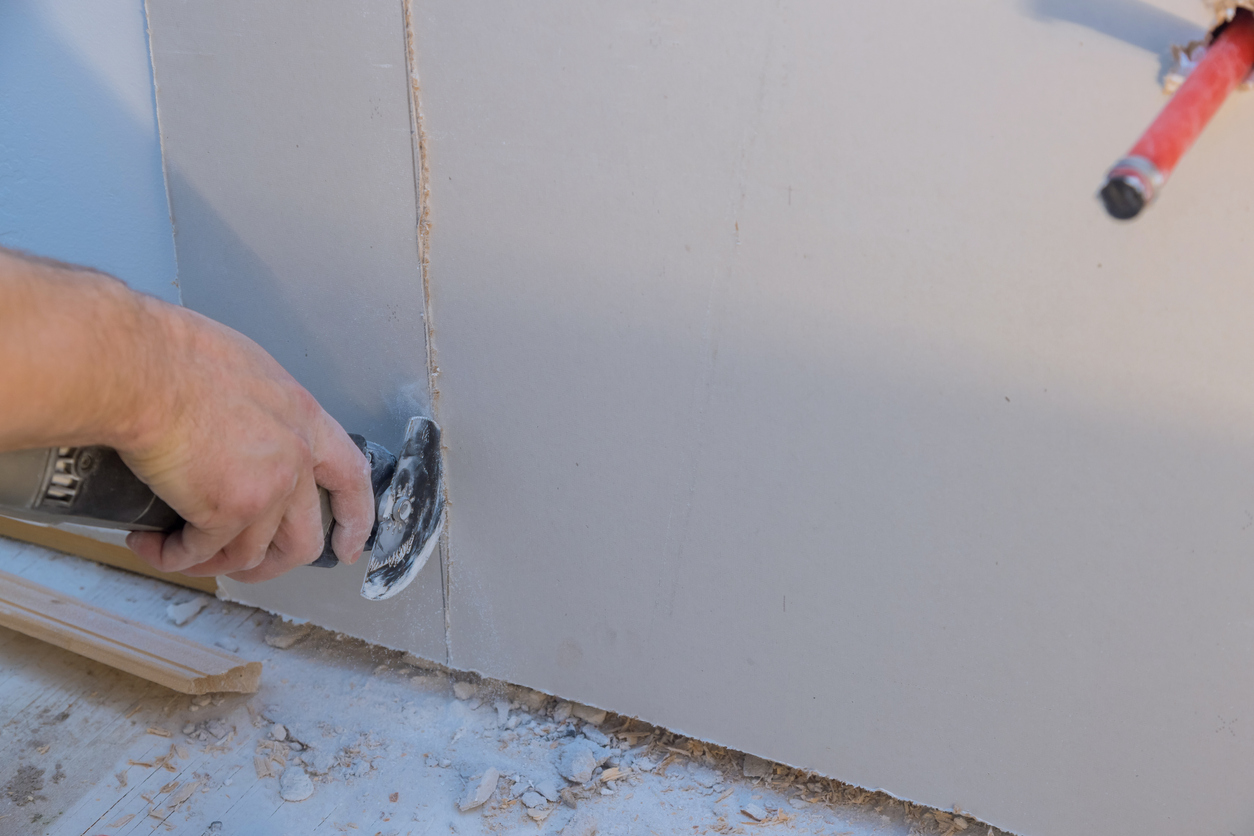
Types of Tools to Cut Drywall
Whether the job is cutting new sheets of drywall to shape or cutting through existing drywall for a new fixture, there’s a tool for the job. The following are some of the most common tools used to cut drywall. These tools generally produce the best results in terms of clean cuts, accuracy, and mess control.
Handheld Drywall Saw
A handheld drywall saw is a hand tool that features a serrated blade with a pointed tip as well as a rubber, plastic, or wood handle. The design of these tools makes it easy to push them through drywall for plunge cuts, and their aggressive teeth cut quickly. They’re excellent for cutting holes in the field of drywall for electrical boxes or lights, but they take a long time to cut drywall to length or width.
Note: Some old-school carpenters would also save their old handsaws for cutting boards to length or width. The gypsum and fiberglass will dull new handsaw blades quickly, but they do help make straight cuts. They’d keep an old saw on hand for that reason.
Utility Knife
A utility knife is a hand tool into which the user inserts a razor utility blade. After using a utility knife to score the drywall paper, the user can snap the board from the back side for a clean cut. They’re most useful for cutting sheets of drywall to length or width, but they are inefficient for cutting holes or curved shapes, as each requires several deep passes.
Oscillating Multi-Tool
Oscillating multi-tools are power tools that feature flat or hooked replaceable blades that move back and forth in very small but very fast strokes. They’re very safe to use, and they’re able to make extremely accurate plunge cuts for fixtures or electrical boxes. They can even cut sheets of drywall to length or width, but this will take a while and create more dust than necessary.
Reciprocating Saw
Reciprocating saws are power tools that use replaceable blades to cut a variety of materials. They’re aggressive for drywall, so they’re best used when making quick cuts around windows and doors where the DIYer can clean the edges up later with a utility knife.
These saws are best used with drywall blades, as they’re a bit less aggressive than traditional reciprocating saw blades.
Jigsaw
DIYers comfortable with jigsaws may find them to be a big help on drywall jobs. The blades are small and easily manipulated, allowing them to cut holes for outlets and fixtures with ease. They can create a lot of dust while cutting, however, so running a vacuum nearby is advised.
Rotary Tool
Rotary tools, rotary cutters, or spiral saws are small handheld power tools very similar to drills, and they use specially designed bits to cut holes, curves, and notches out of drywall. They’re easy to use and generally have guides that sit directly on the drywall surface. They’re a favorite tool among professional drywall installers because they work quickly, and their bits can ride along objects behind the drywall for an accurate cut.
Hole Saw
For round holes in drywall, such as those cut for recessed lighting, ductwork, or pipes, it’s hard to beat the accuracy of a hole saw kit. These tools secure in the chuck of a drill, and they have round blades with small teeth that quickly cut through drywall to leave behind a perfectly round hole. Other versions, known as hole cutters, feature two adjustable blades with a centered drill bit.
What to Consider When Choosing the Best Tool to Cut Drywall
With that background on the types of tools to cut drywall, it’s time for the top considerations to keep in mind when choosing one. The following are some of the most important factors to consider when choosing from the best tools to cut drywall, from the power source to performance.
Cutting Performance
For a tool for cutting drywall to be effective and perform well, the blade needs to be sharp. This is true of all tools, including utility knives, rotary tools, and oscillating multi-tools. If the blade isn’t sharp, the tool will not work well.
Also consider the application. A utility knife will not perform well when cutting curves despite its blade being razor-sharp. Likewise, cutting straight lines with a rotary tool can be a pain. Use the correct tool for the job for the best performance.
Power vs. Manual
There are a lot of reasons to choose power tools over manual tools and vice versa. Power tools are much faster, but they’re loud and can make an incredibly dusty mess. Manual tools are obviously quieter, but they take longer and require more effort from the user (drywall saws, specifically).
In most cases, it pays to have both tools on the job. Manual drywall tools are relatively inexpensive and they’re handy for keeping in a tool belt or pocket. Power tools are heavy-duty and make short work of a long cut.
Corded vs. Cordless
When it comes to corded vs. cordless drywall tools, there is no clear winner, as both have their place on the project. Corded tools can be a hassle because their wires can be trip hazards, but they’re typically very powerful, and the user doesn’t have to worry about battery management. Cordless tools are incredibly portable, and today’s models are plenty powerful, but their batteries can die and slow a job’s progress.
Ultimately, the favor is probably in the cordless tool department, as modern batteries last longer, and brushless motors have plenty of power. And as long as the batteries are full, it doesn’t matter whether the outlets in the room are live—a challenge on many drywall projects.
Our Top Picks
The following are some of the best tools for cutting drywall. Each has its pros and cons, so shoppers will want to keep the top considerations in mind when comparing these tools.
Best Overall
Milwaukee Fastback Flip Utility Knife
See ItAlmost any drywall job can benefit from a trusty utility knife like this two-pack from Milwaukee. Both of these Fastback Flip utility knives feature folding designs that users can close and stash in their pockets. And, when the need arises, they can pull a knife out and flip it open with one hand. This allows them to hold a sheet of drywall in place with one hand and mark or trim it to size with the other.
The two knives in this collection are slightly different, however. One features two seatbelt cutting notches, while the other has a cleaner design. Both offer longer handles than most folding knives, allowing users to get a better grip on the knife when trimming or scoring. Also, the kit comes with a blade dispenser containing 50 blades, though users may choose to upgrade to drywall-specific blades for durability.
Product Specs
- Type: Utility knife
- Power source: Manual
- Blades included: Yes, 50
Pros
- Folding design for easy storage
- 1-handed opening
- 2-pack of knives
- 50 blades included
Cons
- May want to upgrade to drywall blades
Get the Milwaukee tool to cut drywall on Amazon or The Red Tool Store (Milwaukee).
Best Bang for the Buck
Stanley 10-099 Classic 99 Retractable Utility Knife
See ItFolks looking to stretch their utility-knife budget as far as it will go should consider the Stanley 10-099 6-inch retractable utility knife two-pack. This kit comes with two of Stanley’s most traditional utility knives, complete with the retractable blade and in-handle blade storage design, at a very affordable price point.
These knives each have three positions, allowing users to choose how far out they’d like the blade to protrude. Changing blades does require removing a screw and separating the two halves of the knife, but the interlocking nose design keeps them securely together otherwise. Each knife comes with three heavy-duty blades as well.
Product Specs
- Type: Utility knife
- Power source: Manual
- Blades included: Yes, 6 total
Pros
- Affordable
- 2 knives in the pack
- Retractable blade design
- 3 blade positions to choose from
Cons
- In-handle storage requires removing a screw for access
Get the Stanley tool to cut drywall at Amazon, The Home Depot, or Stanley.
Best Utility Knife
Lenox Tools Utility Knife
See ItDIY drywall installers who want a pro-grade utility knife should consider Lenox Tools’ utility knife. This knife features a curved design that allows the user to maintain a comfortable grip while also providing control when cutting sheets of drywall to length or width. It features a titanium nose that resists wear or spreading for long-term use.
The Lenox Tools utility knife has a quick-blade-change feature that only requires the user to press down on the retraction button to release the blade. There is also storage for five blades inside the handle, and accessing them doesn’t require tools: Simply press the button on the handle to release the hinged halves, revealing the included blades inside. This knife is a bit larger than typical and may feel a little heavy in a pocket, but the quality and design may be worth it to some DIYers.
Product Specs
- Type: Utility knife
- Power source: Manual
- Blades included: Yes
Pros
- Curved design for comfort and control
- Titanium nose for durability
- Quick blade changes
- Tool-free storage
Cons
- May be too large or heavy for pocket carrying
Get the Lenox Tools tool to cut drywall on Amazon.
Best Drywall Saw
Klein Tools 725 6u0022 Jab Saw
See ItWhen manually cutting holes through drywall for outlets, fixtures, or access panels, the Klein Tools jab saw is worth a look. This drywall saw features triple-ground teeth that are not only sharp but also cut on the push and pull strokes. These teeth allow the saw to cut through drywall faster and with less effort from the user than other jab saws.
Beyond the teeth, this saw features a soft rubber grip that makes cutting several holes a bit more bearable. Also, the handle’s flat bottom makes striking it with the palm of a hand easy, pushing the pointed tip through the drywall quickly and accurately. Unfortunately, it doesn’t come with a sheath, so users will need to be careful with storage.
Product Specs
- Type: Drywall saw
- Power source: Manual
- Blades included: N/A
Pros
- Triple-ground teeth
- Comfortable soft grip
- Flat butt for striking with an open hand
Cons
- It doesn’t come with a sheath
Get the Klein Tools tool to cut drywall on Amazon or at The Home Depot.
Best Multi-Tool
DeWalt 20V Max XR Oscillating Multi-Tool
See ItThe DeWalt 20V Max XR Oscillating Multi-Tool kit is hard to beat when it comes to cutting holes in drywall for outlets or fixtures without a cord to manage. This cordless kit comes with the multi-tool, a 2-amp hour (Ah) battery, and a charger, allowing users to get to work right away even if they aren’t already invested in the DeWalt battery lineup. It also comes with several blades and sanding attachments as well as a quick-blade-change release lever and an onboard LED work light.
This multi-tool features three speeds, giving users the ability to control dust output and battery usage. For finer speed adjustments, users can lean on the variable speed trigger. This kit also comes with a universal accessory adapter that makes it compatible with most brands’ blades. It doesn’t come with a drywall-specific blade, so users may want to purchase one separately.
Product Specs
- Type: Oscillating multi-tool
- Power source: Battery
- Blades included: Yes
Pros
- Cordless portability
- Speed-sensitive trigger and 3 speed settings
- Universal adapter for use with other brand’s blades
- Comes with several blades and attachments
Cons
- Doesn’t come with a drywall-specific blade
Get the DeWalt Oscillating tool to cut drywall on Amazon or at The Home Depot (without sanding attachments).
Best Reciprocating Saw
Bosch 12V Max Pocket Reciprocating Saw
See ItReciprocating saws can often be difficult to use on drywall, but Bosch’s 12V Max Pocket Reciprocating Saw is ready for the task. This smaller reciprocating saw is easy to control with one hand, yet it has the power to cut quickly through drywall for a variety of applications such as cutting holes for outlets, fixtures, and around windows or doors.
This kit comes with the saw, the charger, and a 12-volt battery. The saw offers toolless blade changes, a built-in battery gauge, and an onboard LED for lighting the way. One of its most important features, however, is the rubber wrap around the front of the saw, which prevents dust from collecting inside and shortening its lifespan. Just keep in mind that this kit doesn’t include blades—they’re an additional purchase.
Product Specs
- Type: Reciprocating saw
- Power source: Battery
- Blades included: No
Pros
- Smaller size is easy to control with 1 hand
- Comes with saw, charger, and battery
- Features a rubber guard around the front to prevent dust damage
Cons
- Blades are an additional purchase
Get the Bosch pocket tool to cut drywall on Amazon or at Lowe’s.
Best Jigsaw
Bosch JS470EB Corded Barrel-Grip Jig Saw
See ItFolks who’d prefer a power tool that’s easy to control and flexible enough to use on other projects should consider the Bosch JS470EB jigsaw. This compact corded jigsaw features a barrel grip that’s easy to control with one hand, making it possible for DIYers to cut curves, electrical boxes, and other holes in drywall.
This jigsaw features variable speeds, allowing users to control not only how quickly this saw cuts but how much dust it creates. And, along with dust control, it does have a dust blower that users can turn on and off at their discretion. It comes with a saw, a blade, a plastic overshoe, and some other accessories that store in the carrying case. Shoppers should keep in mind that this saw is corded and weighs almost 6 pounds, so despite its size, it can be a hassle around a jobsite or when working overhead.
Product Specs
- Type: Jigsaw
- Power source: Corded
- Blades included: Yes, 1
Pros
- Compact design with barrel grip is easy to control
- Features variable speeds and a dust blower
- Comes with a case and a blade
Cons
- Despite being compact, it may be difficult to use overhead
Get the Bosch Barrel-Grip tool to cut drywall on Amazon or at The Home Depot.
Best Rotary Tool
DeWalt 20V Max Drywall Cut-Out Tool Kit
See ItDIYers looking for one of the fastest and most accurate ways to cut drywall around electrical boxes, window openings, and other spots will want to check out DeWalt’s 20V Max Drywall Cut-Out Tool Kit. This kit features a rotary tool with a brushless motor, a 2Ah battery, a charger, and a carrying case for easy transportation.
This cut-out tool has an adjustable depth gauge that helps the user maintain contact with the drywall without jamming the bit in too deeply. It also features toolless bit changes for quickly swapping between bits when necessary. The onboard LED helps light the way in dark corners, and the dust-sealed switch keeps the 26,000 revolutions per minute (rpm) motor running as long as possible without life-shortening dust collecting inside. Just recognize that this is not an inexpensive way to cut drywall, and it comes with only one bit.
Product Specs
- Type: Rotary tool
- Power source: Battery
- Blades included: Yes, 1
Pros
- Brushless 26,000 rpm motor
- Adjustable depth gauge
- Comes with battery and charger
- Toolless bit changes
Cons
- It’s expensive
Get the Dewalt Cut-Out tool to cut drywall on Amazon or at Lowe’s (without battery or charger).
Best Hole Saw
Amartisan Hole Cutter, 1⅝u0022 to 8u0022
See ItCutting circular holes for recessed light, pipes, and ductwork can be a hassle, but Amartisan’s Hole Cutter makes it quite a bit easier. This kit features an adjustable two-blade cutter that inserts into a ⅜-inch drill chuck and makes quick, accurate holes. Hole sizes range from 1⅝ inches to 8 inches, allowing it to handle most holes in drywall.
This kit comes with three sets of replacement blades and several drill-bit sizes, including several masonry bits. It also comes with a flexible dust guard to collect dust before it can spread all over the room. Keep in mind that the blades adjust independently of one another, and this can make aligning them perfectly a bit tricky.
Product Specs
- Type: Hole saw
- Power source: N/A
- Blades included: Yes, 3 sets
Pros
- Comes with replacement blades and bits
- Inserts into most standard drills
- Comes with flexible dust shroud for collecting dust
Cons
- Blades can be difficult to align accurately
Get the Amartisan tool to cut drywall on Amazon.
Our Verdict
Folks looking for an overall high-quality knife set should check out the Milwaukee tool to cut drywall for its capability, replacement blades, and folding design. However, those looking for quick, accurate, and easily controlled power tools should consider the DeWalt Oscillating tool to cut drywall or the Bosch pocket tool to cut drywall.
How We Chose the Best Tools to Cut Drywall
Putting together a list of the best tools to cut drywall was anything but cut-and-dried. We had to draw upon all of our experience with drywall, including professionally and DIY, to determine which tools we would carry in an ideal world. Then we had to consider the features we thought were most important to a DIYer.
Next, we performed extensive product research to come up with a list of products that met our criteria. We compared features, price points, and accessories to ensure the products we were suggesting offered plenty of value. Those that didn’t were tossed aside while those that passed were given awards based on their strengths.
FAQs
That’s a lot of information on the best tools to cut drywall, but there still might be some questions hanging around. The following are some of the most frequently asked questions about these tools as well as the corresponding answers.
Q. What is the easiest way to cut drywall?
The easiest way to cut drywall is to use a T square and score across the surface of the drywall with a drywall knife. Once scored, strike the back of the board to snap the drywall and cut the back of the board.
Q. How is drywall cut by hand?
Cutting drywall by hand is actually very easy, and the best tool to use is a utility knife. Simply score the sheet across its length or width before striking the back of the board to snap it. Be sure to cut as straight as possible for the cleanest cut.
Q. How can a DIYer cut drywall like a professional?
Most drywall installers cut their drywall with utility knives. They score the paper and then snap the sheet from the back. Most pros use a drywall saw and rotary tool for cutting outlet holes as well.
